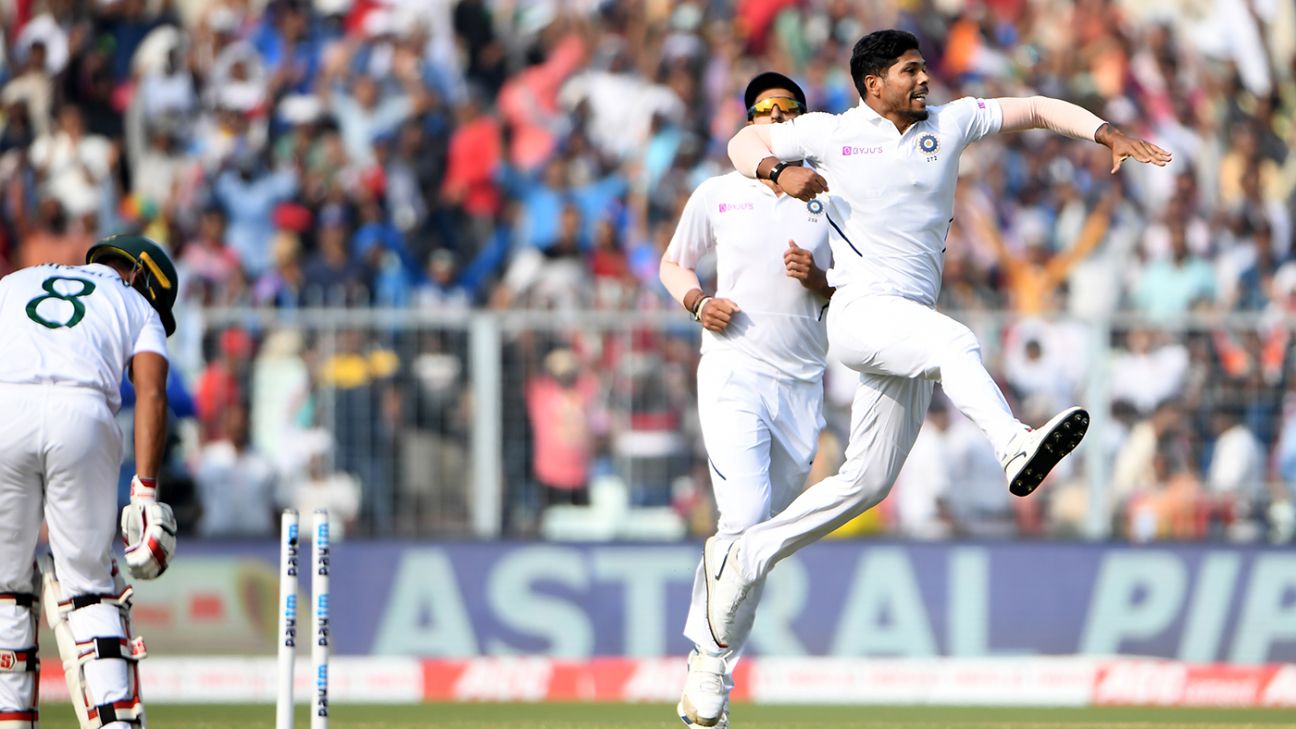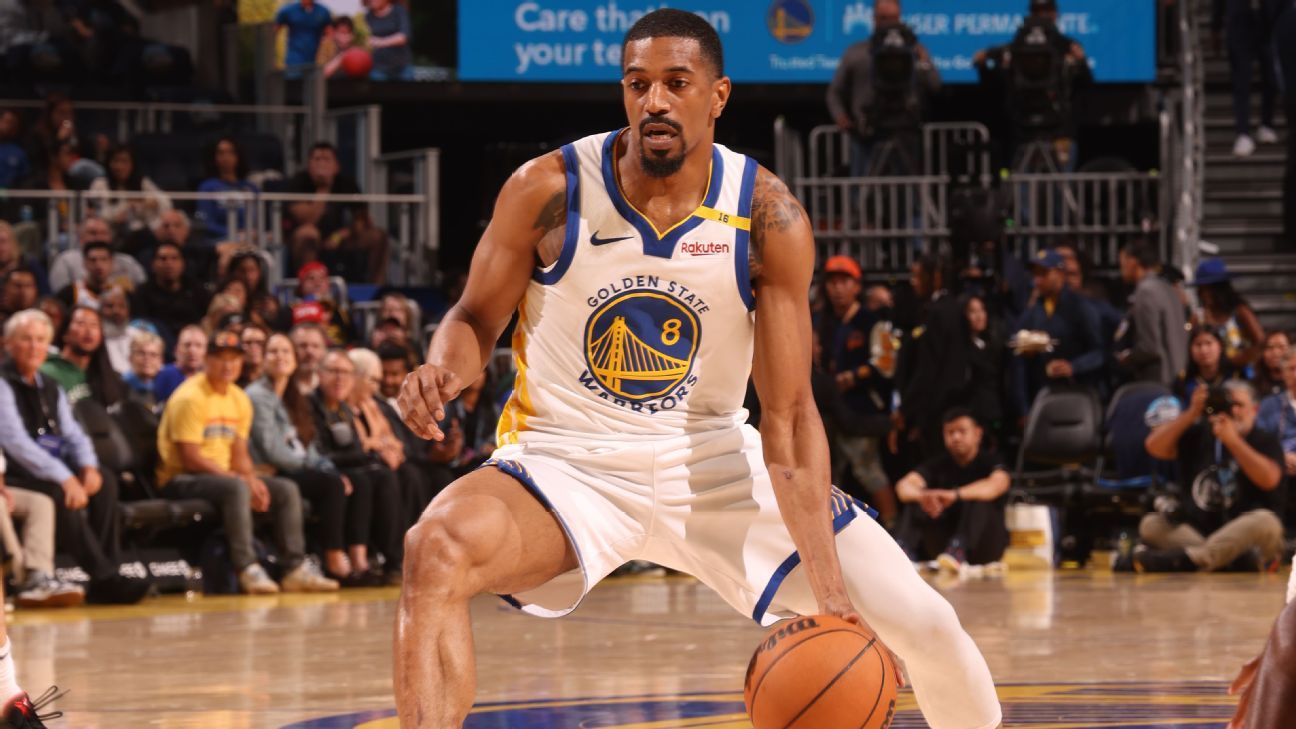
Umesh Yadav says he knew he would get another shot at the highest level if he kept himself fit and trained hard when he was picked only occasionally across formats over the last two years.
As such, Yadav appears to be out of the race in the white-ball formats for now, and in Tests, he was behind Jasprit Bumrah, Ishant Sharma and Mohammed Shami until recently. However, in India's last two home Test series - against South Africa and Bangladesh - he has emerged with the most wickets, the best strike rate and the best average among India's quicks.
"It becomes boring if you sit out and then certain thoughts that you don't want creep into your system," he told PTI. "Why I am not playing? What's happening? It becomes difficult to keep yourself positive, train hard and keep yourself ready.
ALSO READ: India's fast bowlers make world cricket exciting - Phil Simmons
"I knew my chance will come if I am fit since there are so many matches in the calendar. You need to wait since pace unit was doing really well."
India's pace arsenal has been lauded across the board, four back-to-back innings victories only raising their stocks - all, crucially, achieved despite Bumrah's injury-enforced absence. Yadav said the workload management of the fast bowlers had increased their longevity.
"All four of us are now at a level where you can't predict which three will play at one point in time," he said. "It's because of healthy competition. I believe it's a great thing that we are being rotated and played, because of which our longevity has increased and we are producing more match-winning performances.
"It is satisfying to know that now we are looked at as bowlers who could bowl all day. When this crop of fast bowlers came together, all five of us decided we are not here to just rough up the ball for spinners. We started thinking wickets"
"Whoever does well will be a part of the team. Important is to grab your chances with both hands as and when you get them. When I see Bumrah, Ishant and Shami, I try to learn from them. The learning never stops."
Separately, speaking to the Times of India, Yadav said he was pleased that India's fast bowlers were not being seen as limited only to bowling only with the new ball or later to rough the ball up for spinners.
"It feels nice when people talk about fast bowlers," he said. "People earlier talked about spinners when we played at home. They assumed the pitch would start taking turn early. Fast bowlers usually bowled with the new ball and were brought back when there was reverse swing on offer.
"Our job was to roughen up the ball for the spinners. Spinners even started with the new ball. It is satisfying to know that now we are looked at as bowlers who could bowl all day. When this crop of fast bowlers came together, all five of us decided we are not here to just rough up the ball for spinners. We started thinking wickets. This ensured we got the new ball."
Yadav has been talked up as a home specialist - his last away Test was in Perth in December 2018 - relying on his swing and reverse swing, not to forget the pace with which he troubles batsmen even if pitches are not very helpful.
"When you start bowling from the same spot, you tend to become predictable," he said. "The batsman knows that this is a bowler who will hit one particular length and they can manage. When you use [the] crease, you start using angles.
"From closer to stumps, the ball comes straight and then moves so the batsman is able to leave the ball. But if delivered from wide off crease, it comes in with the angle and then might straighten or even move away. That is a bigger challenge as impact is on the stumps. So as a fast bowler, if you don't use the crease, you can't create doubts in a batsman's minds that how much will the ball swing and they can commit mistakes."
Familiarity with conditions, of course, have helped.
"Usually the conditions where you play more, you get an idea of those conditions and you start executing plans well," he said. Yes, I agree a perception grows that this particular bowler is good in Indian or may be Asian conditions. But then if you play more in English conditions, you will do well there. Outside subcontinent, I have played very less matches in England, New Zealand and South Africa. The only place where I have played a few Tests is Australia. So may be that has led to this perception since less games means lesser number of wickets."
"While developing a new skill, there is a possibility of you losing something that comes naturally to you. I have seen many bowlers lose their stock outswing delivery trying to develop inswing"
For a while, though he had pace, Yadav was wayward, often spraying the ball around and going for runs, even in Test cricket. "It all depends on the conditions you play in," he said of the change. "I felt the tip of my index finger didn't get behind the seam enough. So when you try to push the ball, it tends to sway towards the leg stump. It also negates the swing. It happens more with the red ball."
Yadav is known to use his outswingers effectively in home conditions and reckons that working on inswingers came with its own risk.
"To develop a new skill needs hard work but there is a flip side to it," he said. "While developing a new skill, there is a possibility of you losing something that comes naturally to you. I have seen many bowlers lose their stock outswing delivery trying to develop inswing.
"So I believe that if I am getting my outswingers right, I should keep working on it. In the process, if I can perfect the delivery that straightens after pitching, nothing like it. So one needs to put in some thought before one does it."
It would appear that Yadav's short-format career is over internationally, or at least that he isn't in the fray if the top choices are fit and in form. But he hasn't given up hope.
"The white-ball season has just started. You can see Bhuvneshwar [Kumar], Shami, Kuldeep [Yadav] are getting back in the team. If I continue to do well, I may also get back in white-ball cricket."















 Phone: (800) 737. 6040
Phone: (800) 737. 6040 Fax: (800) 825 5558
Fax: (800) 825 5558 Website:
Website:  Email:
Email: 






